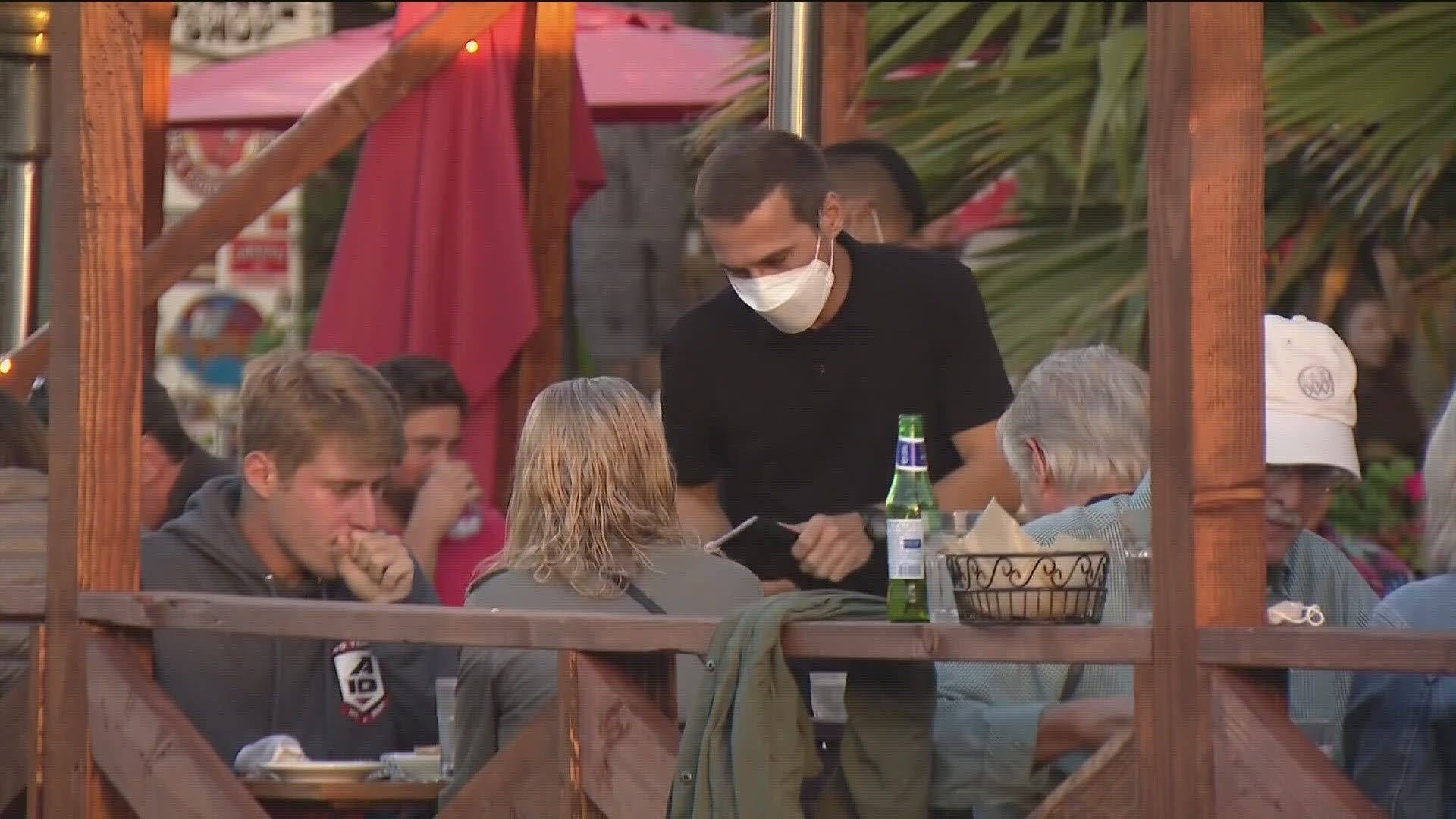SAN DIEGO — For the fourth day in a row, San Diego County public health officials reported a case rate of fewer than 100 positive COVID-19 tests per 100,000 people, however, the state said it will have to review data before removing the county from its monitoring list.
Previously, county and state officials had said if the rate stays below 100 per 100,000 people -- it was 94.7 Saturday -- for three consecutive days, the county would officially be removed from that list. After an additional 14 consecutive days below that number, K-12 schools could potentially reopen for in-person teaching, depending on individual school district metrics.
Additionally, 48 elementary schools have filed waivers with the county to return to school early.
That timeline is now uncertain, as is the timeline of reopening certain businesses for indoor operations.
As the county awaits further guidance from Gov. Gavin Newsom, public health officials reported 279 new COVID-19 cases and four new deaths Friday, raising the county's totals to 34,344 cases and 626 deaths.
One woman and three men died between July 5 and Aug, 13, and their ages ranged from the late 50s to late 80s. All had underlying medical conditions.
Of the deaths reported thus far during the pandemic, 96% had some underlying medical condition. According to Dr. Wilma Wooten, the county's public health officer, the leading underlying causes, which helped contribute to the deaths, were hypertension, diabetes, heart disease, dementia/Alzheimers and chronic kidney disease.
Of the 11,268 tests reported Friday, 2% returned positive, maintaining the 14-day positive testing rate at 4.3%, well below the state's target of 8% or fewer. The 7-day rolling average of tests is 7,944 daily.
While signs look positive for the region, County Supervisor Nathan Fletcher warned county residents against getting complacent.
"We are seeing progress, but we are in the middle of a marathon, not a sprint to the finish line right in front of us," he said. "Our goal is not just to have the rate of cases fall below 100 per 100,000, but to keep it there."
Of the total positive cases in the county, 2,835 -- or 8.3% -- have required hospitalization since the pandemic began, and 710 -- or 2.1% -- were admitted to an intensive care unit.
County health officials also reported two community outbreaks Friday, bringing the number of outbreaks in the past week to 25.
The latest outbreaks were reported in a distribution warehouse and one in a health care setting, according to the county Health and Human Services Agency.
The number of community outbreaks remains well above the county's goal of fewer than seven in a seven-day span. A community setting outbreak is defined as three or more COVID-19 cases in a setting and in people of different households in the past 14 days.
Latinos are still disproportionately impacted by COVID-19, with that ethnic group representing 61.3% of all hospitalizations and 45.4% of all deaths due to the illness. Latinos make up about 35% of San Diego County's population.
A new COVID-19 testing site began operating Wednesday at the San Ysidro Port of Entry PedEast crossing, and County Supervisor Greg Cox cited its immediate success and demand for it.
The free testing site will operate from 6:30 a.m. to noon Monday through Friday and will focus on testing essential workers and American citizens who live in Tijuana, according to San Diego County health officials.
No appointments are necessary at the walk-up site, which aims to offer about 200 tests daily. People getting tested will not be asked about their immigration status or who lives with them, health officials said.
"We know that communities in South Bay have been hit the hardest by COVID-19," said Wooten. "The location was selected because of the increase in cases in the region and the number of people, especially essential workers who cross daily."



